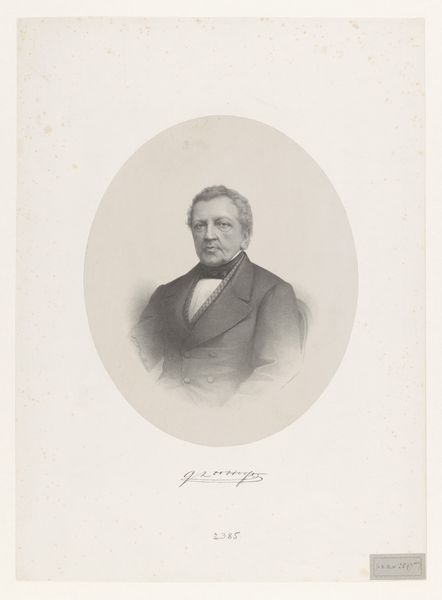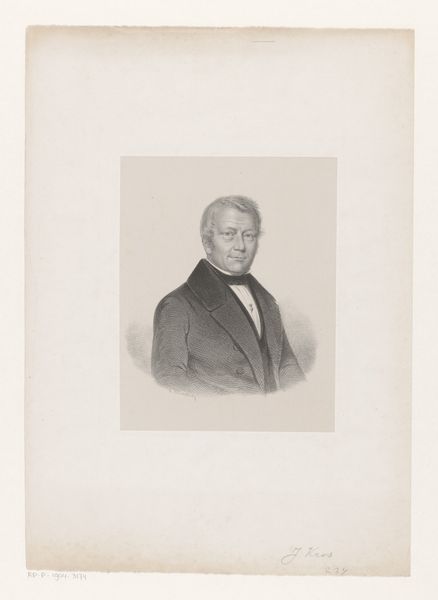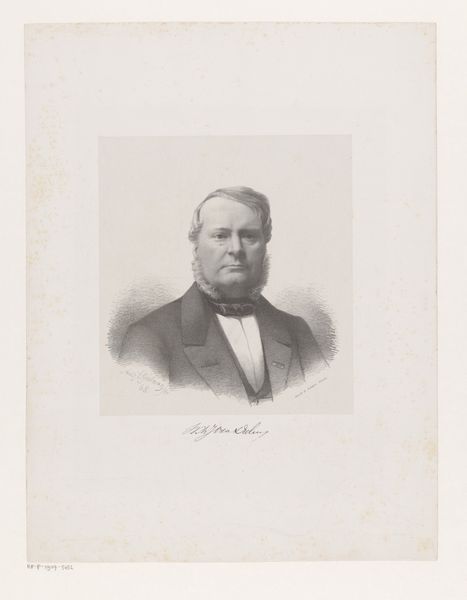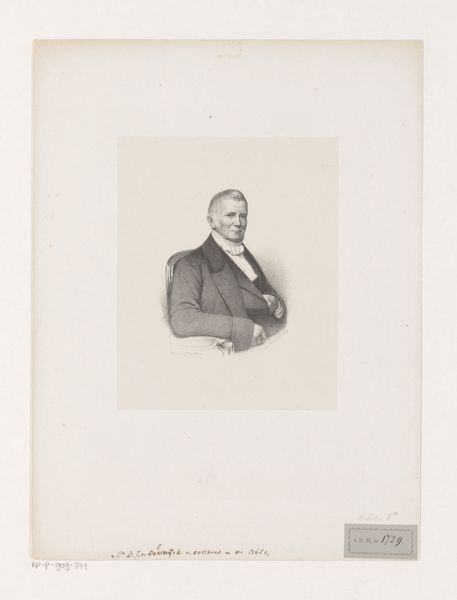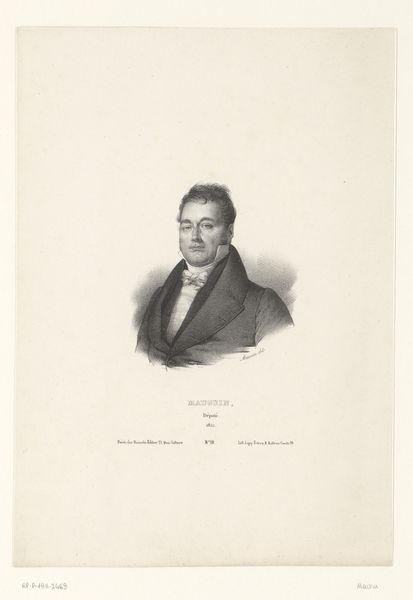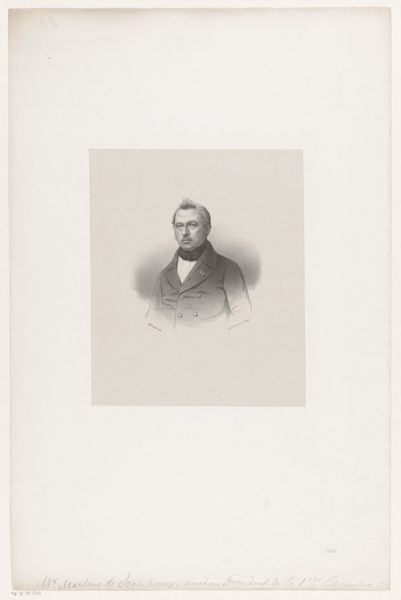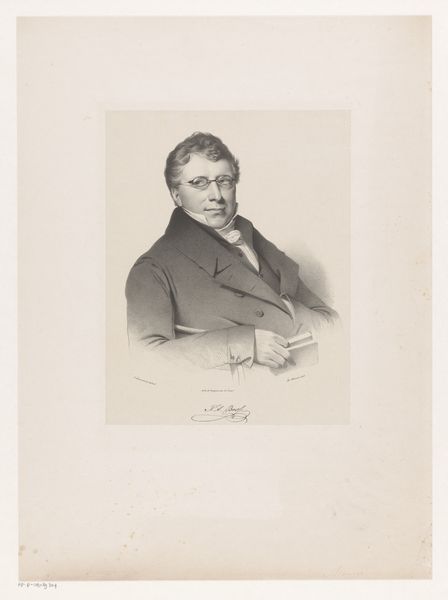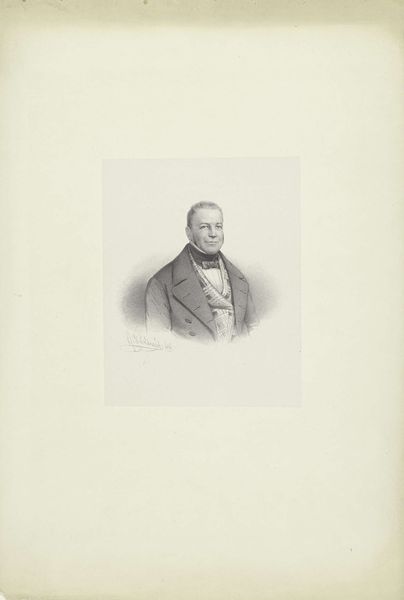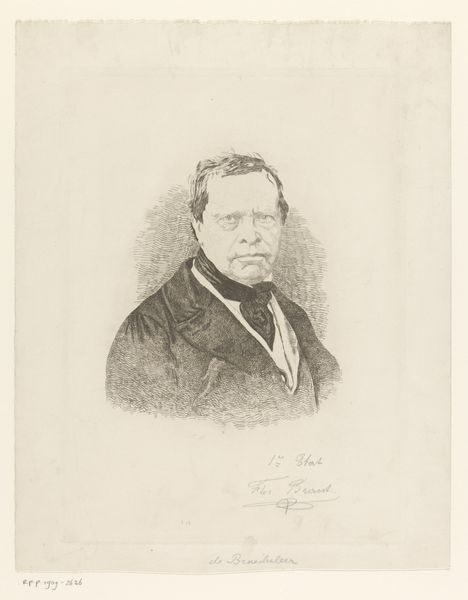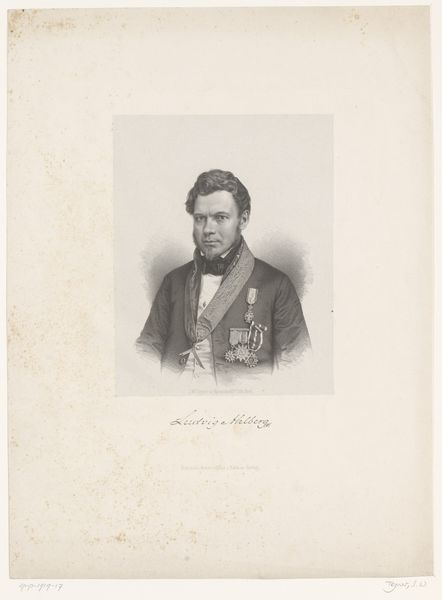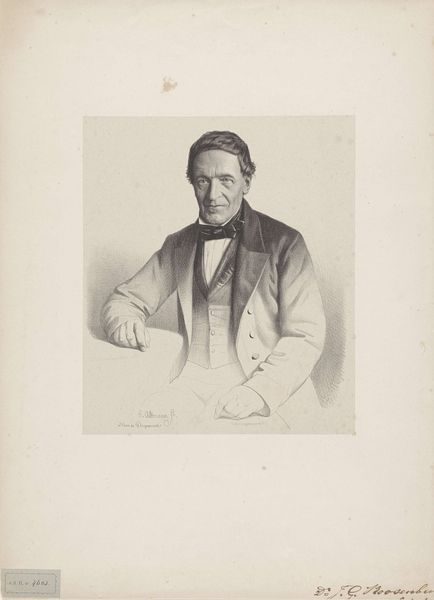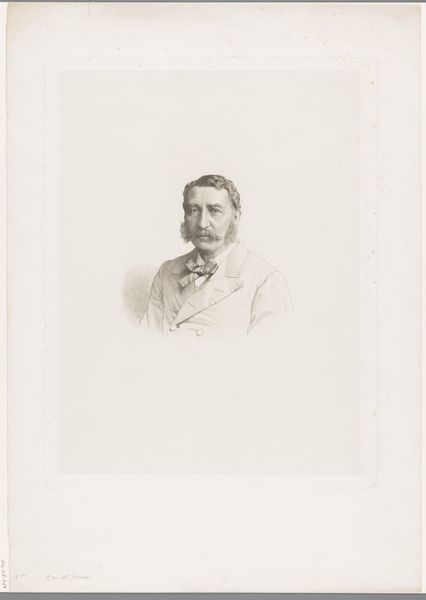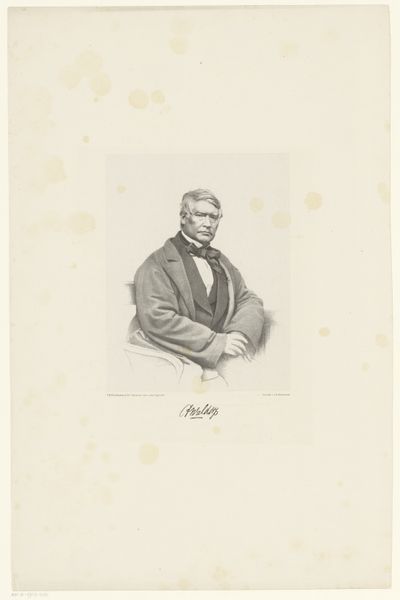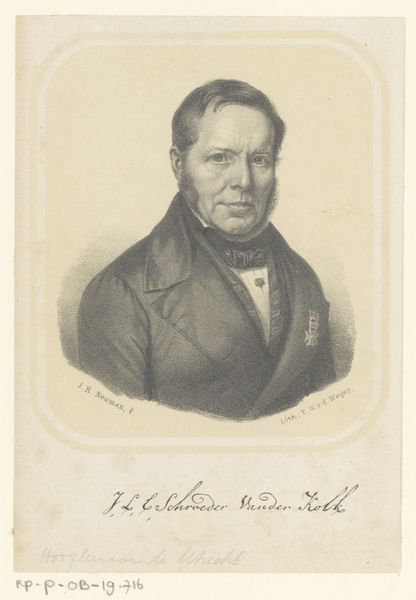
drawing, print, etching, graphite
#
portrait
#
pencil drawn
#
drawing
# print
#
etching
#
pencil sketch
#
pencil drawing
#
graphite
#
portrait drawing
#
realism
Dimensions: height 300 mm, width 174 mm
Copyright: Rijks Museum: Open Domain
Curator: This print at the Rijksmuseum is titled *Portret van Charles van Geert*. It's attributed to Jean Baptiste Pierre Michiels, dating roughly from 1831 to 1890, using techniques of etching and graphite to create the image. Editor: The precision is really quite arresting, especially around the face. There's a certain gravity in his expression, emphasized by the controlled hatching of the lines that make up the form. Curator: Precisely! The medium of graphite lends itself so well to capturing the psychological depth. Consider the era—the rising middle class asserting itself. A portrait became a symbol of status and a method of enshrining memory. His gaze, almost stern, is an assertion of his place. Editor: You read assertion; I perceive perhaps duty or resolve. Observe the textures—the subtle shading giving form to the face contrasted with the defined fabric of his jacket. The contrast heightens the figure, rendering his expression of a deep solemnity, perhaps. Curator: The starkness serves the iconography perfectly. This wasn't just about appearances; it's about encapsulating a man's essence for posterity. That small pin… likely an honor of some sort, perhaps a civic duty designation signifying patriotism and contribution. It elevates him beyond simple representation. Editor: Yes, that pinpoint of detail draws the eye. It redirects the focus, punctuating the broader formality of the subject’s attire. Note the clever use of the white space—it amplifies his presence. What a great example of formal composition as expressive tool. Curator: In the rendering of Van Geert, we see an embodiment of the values the burgeoning bourgeois society held dear: self-control, dedication, a commitment to civic engagement—an echo of the times themselves. Editor: It's the artist's adept control over tone and texture, then, combined with sharp detailing and restrained colour that enables it to function so well as both an effective document and emotive display. The weight of a particular epoch rests within this work. Curator: Agreed. And looking at this portrait, we're reminded how portraits can act as windows into a particular period, allowing us to see both the individual and society more clearly. Editor: Exactly. The skill in this relatively unassuming portrait resides in its compelling and carefully arranged composition which continues to engage us.
Comments
No comments
Be the first to comment and join the conversation on the ultimate creative platform.
